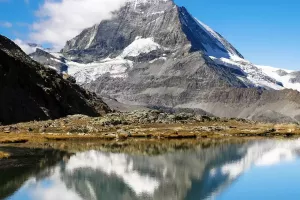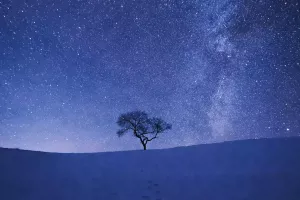Facing such a beautiful snow scene, do you feel shocked too! They attract the speed with which you press the shutter. If you are shooting snow-capped mountains, you can express the holiness of snow-capped mountains through changes in lighting. In addition, choosing a suitable reference object can set off the beauty of the snow-capped mountains.
Here are some shooting tips, let's take a look!
First, arrange the screen structure reasonably. Snowy mountains shot in horizontal format pay more attention to the horizontal use of the horizon, and a wider angle of view can be obtained by using a wide-angle or ultra-wide-angle lens.
The snow-capped mountains shot in vertical format can express the spatial three-dimensional effect of the vertical direction of the snow-capped mountains. Of course, snow-capped mountains shot from different angles will also have different effects. For example, shooting from an upward angle can make the picture present a stable and magnificent visual experience.
When arranging the foreground, elements such as trees, wild animals, and travelers can bring out the height of the snow-capped mountains, increase the level and three-dimensional sense of the picture, and can also create a different atmosphere of the picture.
Elements such as lakes, grasslands, and flocks can enhance the expressiveness of the picture and expand the visual effect. Rivers or running wild animals can instantly make the picture come alive and make the snow-capped mountains appear more silent. When shooting snow-capped mountains, it is not difficult to choose a background. The blue sky, sea of clouds, sunset, moon, etc. can create a fresh and peaceful atmosphere, especially the clouds at sunrise and sunset, which have artistic appeal.
In snow shooting, light is used to emphasize texture and layers. White snow will produce a lot of reflections. Therefore, it is not recommended to use the scattered light of smooth light or cloudy sky for shooting. The transparent texture of snow, the picture is just a white piece.
If you use side light or side backlight to shoot snow-capped mountains, you can better present the texture and layer of snow and the three-dimensional sense of snow-capped mountains, and the picture is constantly changing.
Don't forget to use post-editing tones to enhance the snow effect. After we have taken some better negatives, don't forget to do some post-processing optimizations on these photos before sharing, such as extra impurities or objects, and color adjustments, such as the photos we took on a sunny day and the warm sun, you can Add some warm colors and make strict adjustments to the exposure of the photo to ensure accurate exposure while getting the best details.
What other useful photography tips do you know of?


